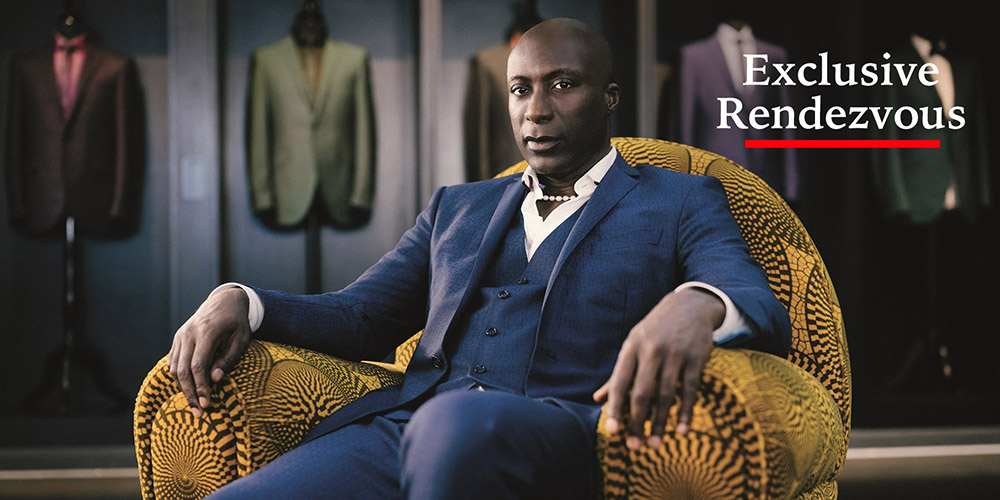
Poltrona Frau has collaborated with the famed British Saville Row menswear designer, Ozwald Boateng for a capsule collection of iconic design furniture that combines culture, artistry, and craft. This is the first collaboration for Boateng in furniture design which explores African patterns, paired with Italian design. An exciting start, we speak to Ozwald Boateng to understand how he is looking at design, this collaboration, and from where he gets his ideas and inspirations.
From menswear to furnishing, how excited are you about this journey?
I’m very excited about it, interiors are something I’ve been thinking about for a very long time. If you’re familiar with my work and have seen any of my original images featured in the media, you might notice that I often find myself seated on a chair quite like the Poltrona Frau Chester. For me, furniture plays a significant role in expressing my aesthetic language. I’ve always had the desire to take a piece of furniture and reinvent its communication, but I could never quite find the right supplier or partner, so time passes, you forget about it you move on to other things. Then, a friend introduced me to Poltrona Frau, and it felt like a promising match, I immediately recognised their meticulous attention to detail and commitment to quality. It was clear to me that I was in good hands. We discussed where to begin, but truth be told, I had a vision since the moment I laid eyes on Chester. it was a seamless entry point and so very much like my tailoring, it’s always about cut, quality and attention to detail and then the fabrication so that was a very easy thing to deliver.
When you start a collaboration the first step is finding something which is iconic to the brand and then finding a way to translate a new language into that and then also create an interior furniture language, which does not exist within the brand, that’s unique.
Influences and social changes, how do the same alter design thoughts?
The world always influences the designer because we’re living it and I’m always inspired and influenced by what’s around us. When it comes to interiors, there is a real opportunity for a different expression of language which I’m developing with Poltrona Frau. From a cultural perspective, my African roots and my British roots are combined in a language around furniture which I believe is already quite interesting. Through my partnership with Poltrona Frau, we produced something quite unique combining African aesthetics and Italian craftsmanship.
Design language plays a big role in making products immortal in retail. How did you approach the design language for Poltrona Frau on the drawing board?
Once you understand how something is made, then you can understand what you can do from a creative perspective, and how you can introduce your ideas. You’ve got to respect the process; it comes from my Savile Row teachings. Starting on a traditional base is always the key for me, it’s about taking something traditional and finding a modern language in which to express it.
What is your inspiration for your design planning?
It’s always been about how can I take something traditional and find creative ways to evolve it. That’s why I am drawn to Poltrona Frau’s The Chester and The Vanity Fair; this is what I do. As a designer, it is important to have a language. When I say language, you can see it; you can tell it came from your hands, that you’re the creator. You can look immediately and know I placed my hands on them, and I think this is key; I call that a ‘creative language’.
Do you consider pricing when designing or are the two independently dealt with?
I kind of think about it independently since I’m in the luxury goods business, I tend to do things at the high end of the marketplace where a big bulk of my clients are.
When planning the new collection for Poltrona Frau, what was your thought proposition?
The start position is respecting what already exists–this is why this was perfect for me. Then, it’s just a question of finding the correct fabrication language that suits it. A subtle translation is key. If you are going to take on a piece that is so iconic, you can’t take it so far away from the original position. The skill is to keep it completely intact but put a different perspective on it. It is the same language that I use in my design; little things that you don’t know are there, and you’ll discover them. They add a layer of detail.
Notifications